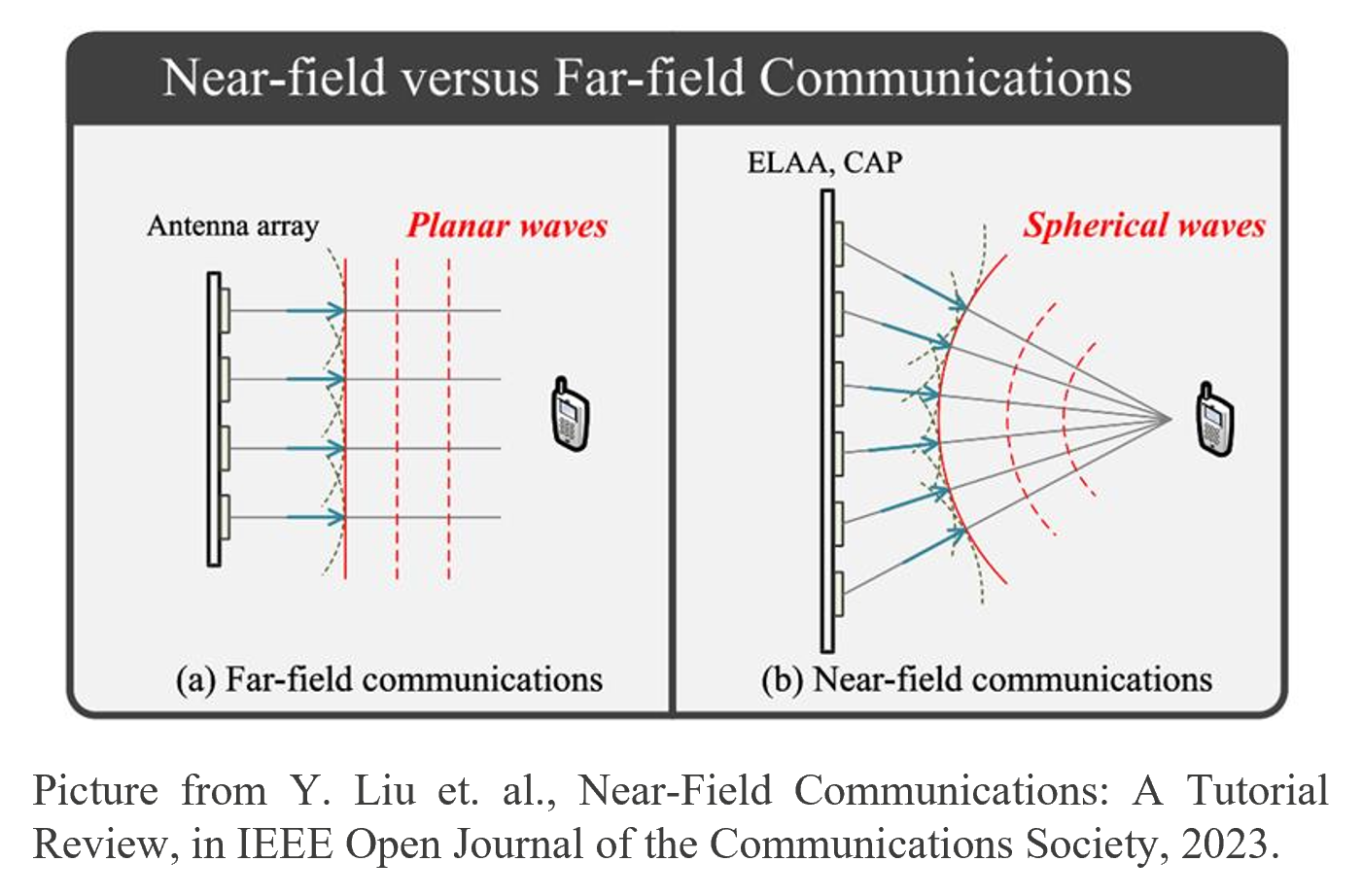Holographic radio architectures and signal processing for future high-throughput near-field communications
PhD - Leuven | More than two weeks ago
Driven by new emerging applications such as augmented reality, virtual reality, backhauling, and broadband access, the future wireless connectivity landscape towards 6G and beyond will support a wide a range of applications with very-high-throughput requirements. Such stringent requirements make the radio access design very challenging. The traditional approaches to increase the wireless data rate are increasing the bandwidth and resorting to multi-input, multi-output (MIMO) techniques. The former is not scalable beyond a few GHz of bandwidth and the latter is often impossible in the sub-THz bands that do not feature rich multipath, which is needed to have a significant channel rank.
A completely different approach, yet largely unexplored, is to resort to MIMO near-field communications, dubbed as holographic radio. The near-field propagation can hold up to a significant range especially in high-frequency bands. Because transmission in the near field implies spherical waves instead of plane waves, the channel matrix can have a high rank even for point-to-point links. Hence, high throughput can be achieved with moderate bandwidth even in a point-to-point link because multiple independent streams can be sent in parallel.
The goal of this PhD is to pioneer the next generation of MIMO near-field communications, shaping both its system architecture and physical layer algorithms. Your challenge is not just to make it work - but to redefine what’s possible by harnessing the unique properties of the near-field channel. If we combine this near-field channel with large bandwidths and multiple carrier frequencies we will have available in the next generation systems, we can come up with new antenna architectures that combine multi-band and multi-antenna near-field processing.
This research demands creativity and unconventional thinking. You will navigate complex trade-offs involving massive antenna arrays, computational feasibility, theoretical limits, and real-world hardware constraints. To start exploring this emerging domain, you will first develop a sophisticated simulation environment in Matlab and/or Python, based on a custom near-field channel model and including hardware non-idealities.
Beyond simulation, your work will provide deep insights into how near-field MIMO compares with existing paradigms like traditional diversity-based MIMO and LOS-MIMO. Your findings could redefine fundamental MIMO principles, with potential validation through real-world experiments on a communication testbed. If you're driven by curiosity, this PhD will give you the freedom and tools to innovate at the frontier of wireless technology.
As a PhD student, you will be part of a large IMEC team working on the research, implementation and prototyping of future communications systems composed of experts in digital, analog and mm-wave design, wireless communication systems, signal processing and machine learning, channel measurements and modelling. This is a unique opportunity to develop innovative, multi-disciplinary technology and shape future wireless networks. You will publish your research in top-level journals and conferences.

Required background: Signal processing for wireless communications. Knowledge of channel modelling and optimization techniques is a plus. Proficiency with Matlab or Python.
Type of work: 20% literature and theory, 70% design, modelling and simulation, 10% design/experimental
Supervisor: Sofie Pollin
Co-supervisor: Andre Bourdoux
Daily advisor: Claude Desset
The reference code for this position is 2025-091. Mention this reference code on your application form.
